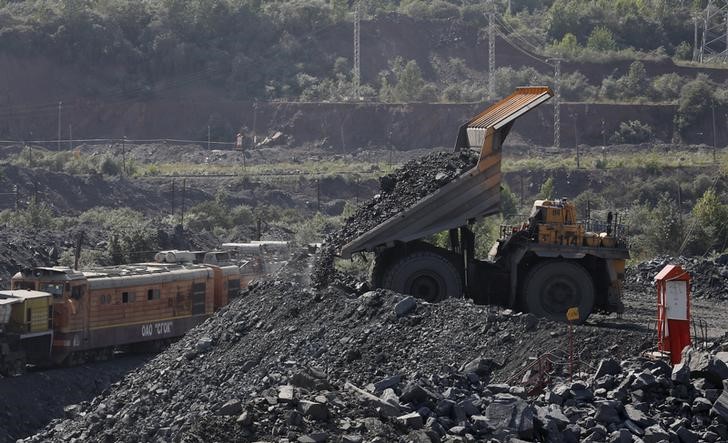(The opinions expressed here are those of the author, a columnist for Reuters.)
By Clyde Russell
PERTH, March 22 (Reuters) - A comfortable consensus is emerging in the iron ore market that China's vast steel industry has undergone a structural change that has resulted in quality iron ore gaining a permanent advantage over lower grades.
Certainly the common theme of presentations at this week's Global Iron Ore and Steel Forecast Conference in Perth was that the current premium of ore with a higher iron content is now a defining characteristic of China's market.
This shift matters as China buys about two-thirds of global seaborne iron ore, with the vast majority of the annual demand of more than 1 billion tonnes coming from Australia and Brazil, with South Africa a distant third.
The industry benchmark is ore with an iron content of 62 percent, a quality level that is met by most Brazilian ore, as well as by top Australian miner Rio Tinto (LON:RIO) RIO.AX .
BHP Billiton (LON:BLT) BHP.AX , Australia's second-ranked producer, comes close to this level with its output, but third-ranked Fortescue Metals Group FMG.AX delivers a grade closer to the 58 percent level.
China's switch to using higher-grade iron ore in its blast furnaces is seemingly built around three main factors.
The first is the need to reduce air pollution, which encourages steel mills to use the higher grade ores as they require less coking coal in order to be turned into pig iron and then crude steel.
Using high-grade iron ore with a 65 percent iron content consumes about 12 percent less coking coal than using 58 percent iron ore.
The second is the ongoing government-mandated rationalisation of the steel industry, with capacity closures of around a total 110 million tonnes being achieved in 2016 and 2017. Up to 40 million tonnes more was slated to be shut down this year.
This policy is aimed at eliminating overcapacity and clearing out older, less-efficient producers, thereby boosting the profitability of the remaining steel mills.
The policy has contributed to the third factor driving the switch to higher grade ore, namely that mills are enjoying strong profit margins.
From being loss-making for several years up to 2016, China's steel producers have turned strongly profitable in recent months, with the margin on benchmark steel rebar around $117 a tonne, according to S&P Global Platts data.
With the steel futures in Shanghai SRBcv1 currently trading around the equivalent of $575, it's clear that steel makers can afford to use the higher-cost iron ore as they are still incentivised to maximise output to capture the available profit.
If the current market consensus is correct that China's shift to higher grade iron ore is structural, it becomes apparent that these three factors will also have to be structural.
PRICING CHANGES UNLIKELY TO BE STRUCTURAL
It's probably fair to say that the first two - the focus on reducing pollution and the rationalisation of capacity - appear to be ongoing policies and there are no signs that they will be relaxed or changed in any shape.
But the most important factor is the profitability of steel mills, and this is far from guaranteed.
The return to profitability was driven by stimulus spending on infrastructure and a recovery in real estate investment, and both of these influences may be waning somewhat.
This isn't to suggest a sharp correction is looming in Chinese steel demand and prices, but at the same time constructing a case for sustaining the current levels of robust profits is quite challenging.
Steel is a cyclical business and is likely to remain so, meaning that at some point China's producers will once again face a margin squeeze.
When that happens the incentive switches to use the lowest cost inputs and accept a reduction in volumes from the blast furnace.
This could well put lower grade iron ore back in play, and shrink the current wide margins.
The spot price in China of 62 percent iron ore .IO62-CNO=MB , as assessed by Metal Bulletin, was at $67.25 a tonne on Wednesday. The assessment for the 58 percent grade .IO58-CNO=MB was $39.06 a tonne.
This makes the lower grade ore about 42 percent cheaper, and this has widened from the 29 percent gap that prevailed at the end of 2016.
The current gap is clearly seen by many in the industry as the new normal, and it's likely to persist as long as China's steel mills enjoy the type of profits they are getting currently.
But it may be a touch too soon to say that this is a sustained structural change that cannot be reversed if market circumstances change, as they inevitably will.
(Editing by Richard Pullin)
